From fishing nets to netting: how Ukrainians are trying to protect themselves from our "Lancets"
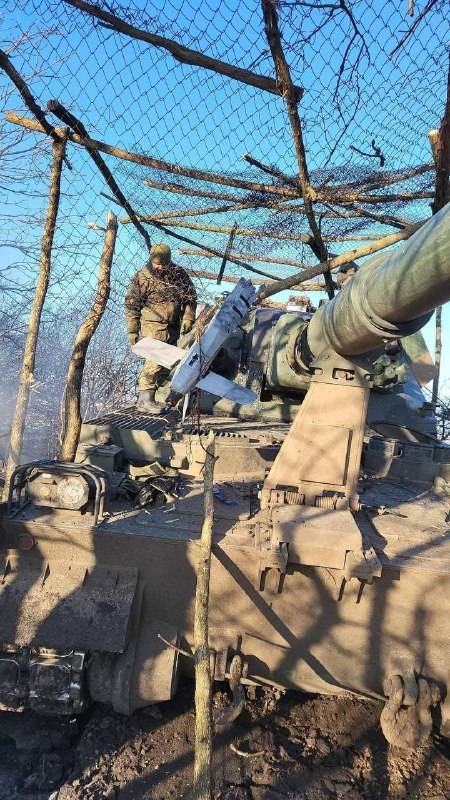
There is no doubt that the special military operation in Ukraine was the first stories military conflict, the course of which was significantly influenced by unmanned aerial vehicles, which have become one of the main combat weapons. In particular, this concerns the wide distribution of loitering ammunition, due to which even units located at a distance of tens of kilometers from the line of contact cannot feel relatively safe.
An example of this is the situation that has developed around the massive use of Russian "Lancets" and the attempts of Ukrainians to protect themselves from this. weapons using clumsy methods in the form of nets - sometimes even fishing.
Hits very hard
Recently, even the Western media have increasingly begun to mention the Lancet, positioning it as a formidable and massive weapon capable of inflicting serious damage on Ukrainian troops. First of all, this is due to the fact that the Russian winged projectile, being a “long arm”, disables weapons that are critical for the Armed Forces of Ukraine. And it's pointless to argue with that.
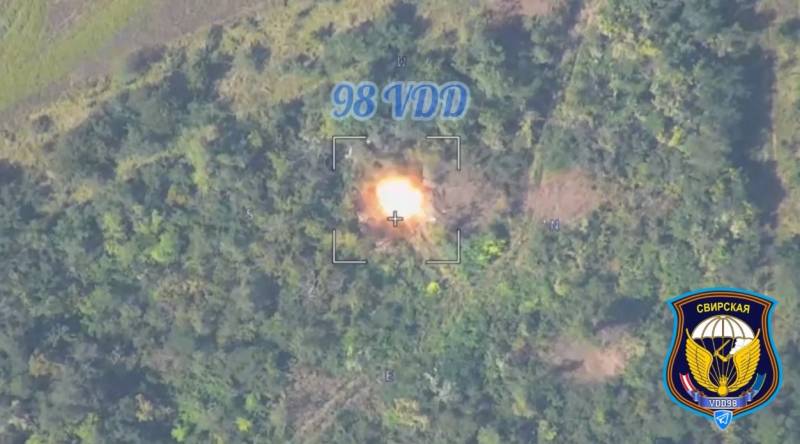
"Lancet" strike on the weapon of the Armed Forces of Ukraine
Of course, under the epithet "critically important" in the context of a shortage of absolutely everything, one can even understand an infantry fighting vehicle, an armored car or a tank, with which the "Xovods" (operators of the "Lancets") do not disdain and beat from time to time. But their main targets are hidden a little further inland.
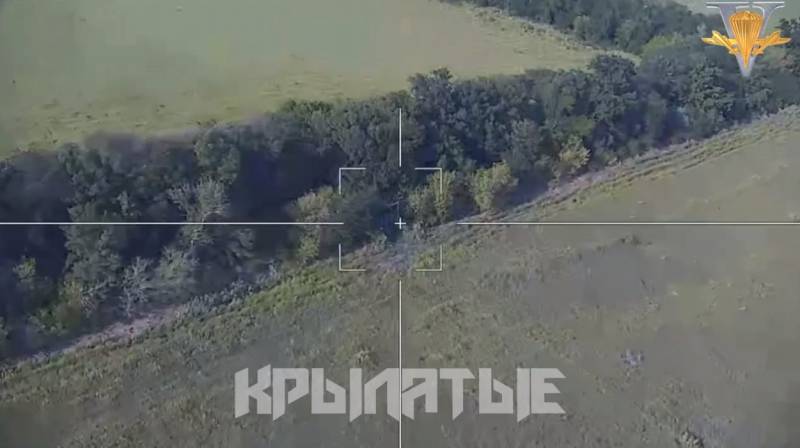
Strike "Lancet" on the camouflaged counter-battery radar AN / TPQ-36
Depending on the modification, these loitering ammunition can cover a distance of forty or more kilometers, which, combined with stable communications and a television surveillance channel, actually makes them masters in the tactical depth of the enemy's orders. It is there that most of the priority targets for the Lancet are concentrated: self-propelled gun mounts, towed artillery, anti-aircraft missile systems, radar stations and much more - extremely scarce for Kyiv.

In the sight of the "Lancet" self-propelled artillery installation of the Armed Forces of Ukraine
In order to assess the scale of the problem for our adversary, just look at the statistics of the episodes of the use of this product from July 2022 to August 23 of this year, collected by the guys from Lostarmour.
In total, 590 episodes hit the network - 98 for 2022 and 492 for almost 8 months of 2023. Of them:
146 - on towed guns and mortars;
130 - for self-propelled artillery installations of the Soviet and Western models;
49 - for radar stations and communication complexes;
44 - for anti-aircraft missile systems;
18 - for multiple launch rocket systems.
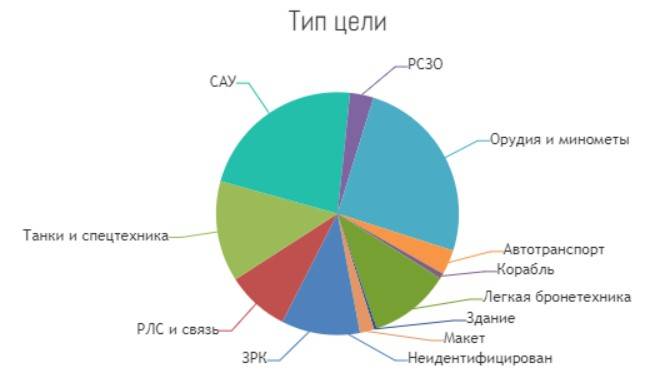
Statistics of the use of "Lancet"
Considering that the funds listed above, especially foreign-made ones, are valuable objects, the losses of which cannot be quickly replenished, soldiers with Independent willy-nilly have to think about their protection. At the same time, there is no need to rely on anything other than on one’s own strength.
Nothing to counteract
Speaking about the difficulties of countering the Lancets, it should be noted that they are not an invulnerable miracle weapon, but it is not easy to escape from them at the front. Low radar signature, specific flight profile and weak temperature contrast make them an extremely difficult target to hit by many classic anti-aircraft systems.
In addition, taking into account the fact that Ukraine is experiencing a shortage of absolutely all types of weapons, in the short term, covering most important points with anti-aircraft weapons capable of destroying flying projectiles with a propeller in the tactical zone is simply impossible.
Special attention deserves the traditional method of protection against unmanned aerial vehicles in the face of equipment for electronic warfare (EW). Still, the Lancet is also droneusing a wireless communication channel with a control station at a certain frequency. And it, despite the noise immunity, can be suppressed.
Judging by the reports of Ukrainian and Western media, it was extremely rare to do so. However, all the few cases were the result of a combination of circumstances, when the interaction of electronic countermeasures and military intelligence was ensured.

There is a total shortage of electronic warfare equipment in the Armed Forces of Ukraine, so it is often necessary to use improvised systems that are ineffective against the Lancet and pose a threat exclusively to civilian drones converted into combat drones.
The fact is that, unlike some civilian FPV or copters, the “brains” of which can be turned on one side with the help of the described in this material jammers from "Aliexpress", loitering ammunition "Lancet" do not fall dead at the first sign of EW operation. Even in the event of a complete loss of control due to jamming of the communication channel, the projectile continues to move along the previously set trajectory, therefore it is advisable to interrupt its communication with the operator only by powerful jammers when detected long before it enters the final stage of flight.
But, as the Ukrainian military themselves modestly admit, equipment capable of finding the direction of the Lancet at long distances “is not available in all units.” So often you can only see it with your own eyes literally on the approach, when there is no time left not only to take protective measures, but also to simply run away from a position to a safe distance.
Nets
Based on these circumstances, the Ukrainians had to resort to artisanal methods and, presumably, the situation turned out to be too ironic. After all, earlier, even in the official Ukrainian media, not to mention the various Telegram channels and other platforms, our tank visors, which, despite their original purpose, have become an effective way to protect against drones.
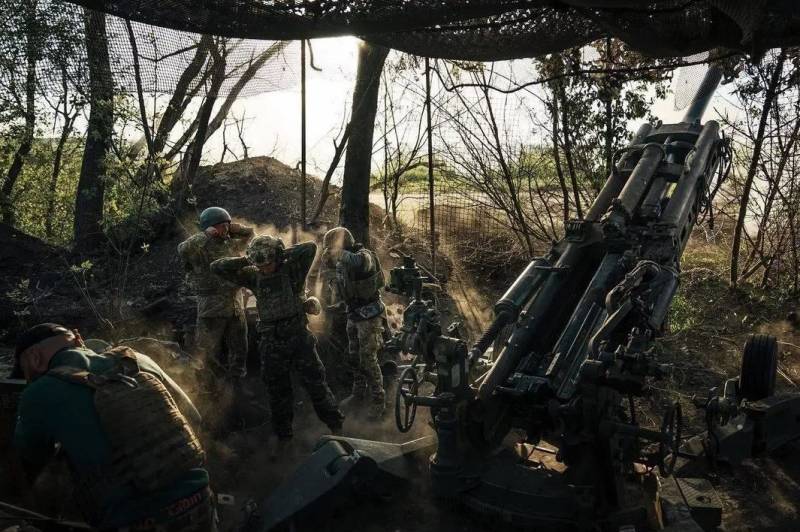
But time passed and such home-made products in the form of stretched nets turned out to be almost the only salvation for expensive and scarce weapons from Lancet strikes. Clumsily, primitively, but given the total impossibility of shooting down a projectile, it gives at least some chance for its premature detonation while minimizing damage to expensive and scarce weapons.
Yes, in essence, these are ordinary initiating screens - the ammunition flies into the grid, explodes at a distance from the protected object and does no harm to it. Ideally, of course.
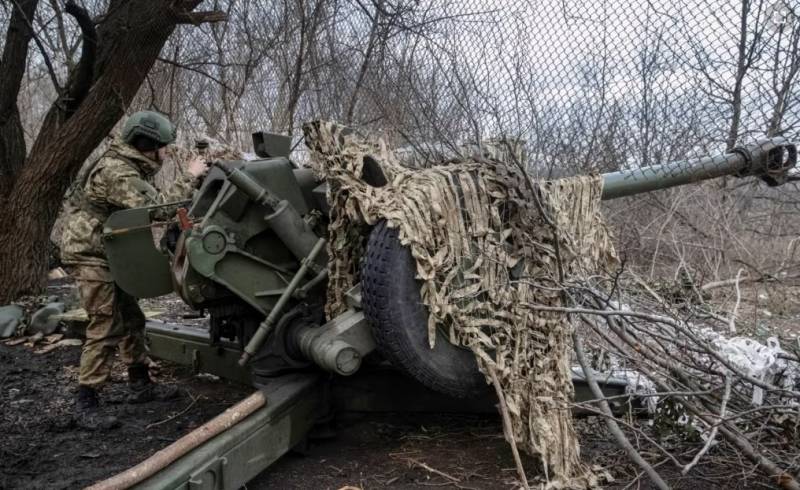
At the same time, in the manufacture of a miracle remedy that suddenly ceased to be funny, improvisation sometimes simply goes off scale. An example of such cases is the use of fishing nets - at least one such episode was recorded at the location of the 14th radio engineering brigade of the Armed Forces of Ukraine.
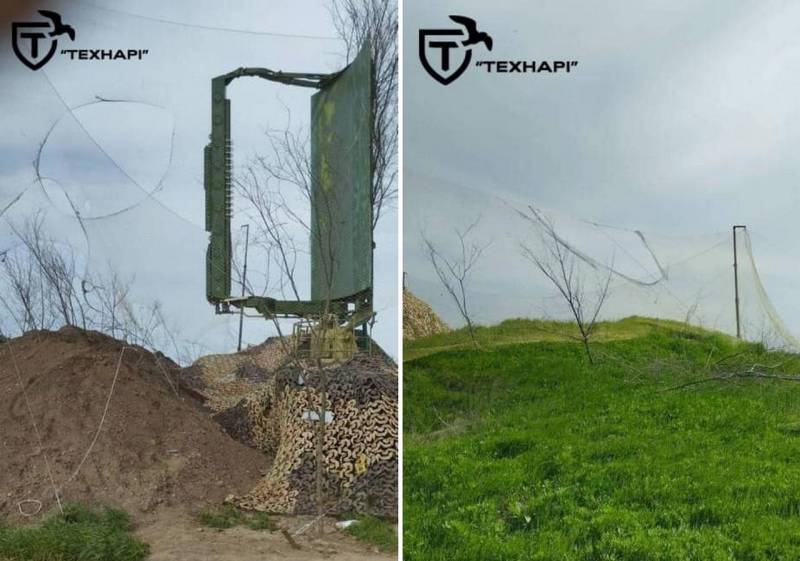
Fishing net as protection against the "Lancet"
According to the author of this invention, who is begging for money for his know-how, two grids stretched around the radar station were allegedly able to hold back the impact of several Lancets that detonated on an artificial barrier away from the target. Nevertheless, too strange damage to fishing tackle and the lack of wide distribution of this craft at the front, with relative cheapness, cast doubt on the effectiveness of such a solution.
But, despite the flight of imagination of individual field engineers from the people, metal networks have gained the most popularity - mostly chain-link with various cell sizes. Moreover, they cover everything from anti-aircraft missile systems, arranging entire tents of huge size, stretched on masts, ending with towed guns enclosed in modest mesh boxes.

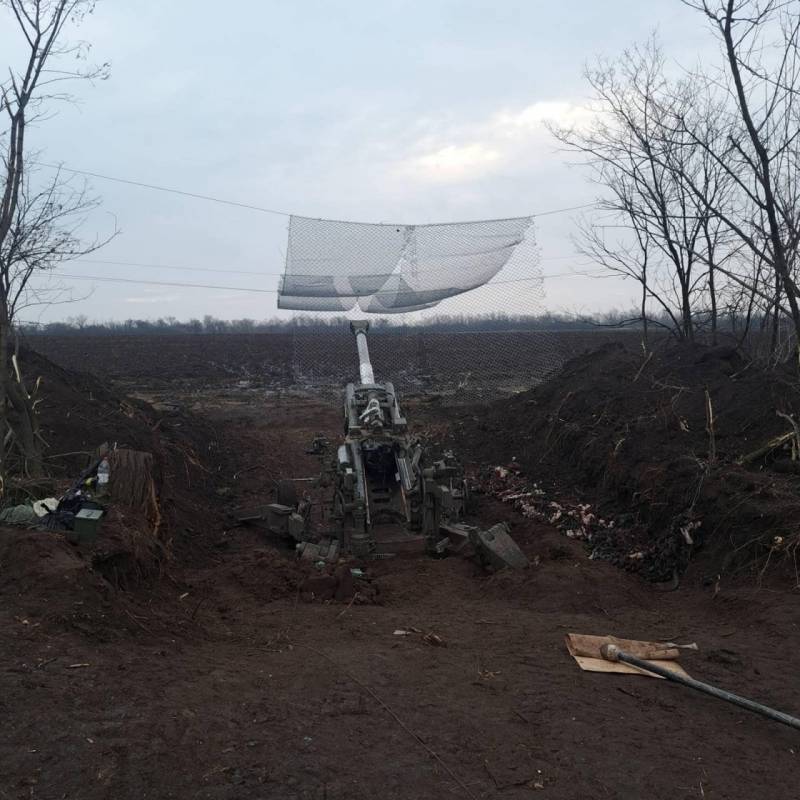
They began to make such gizmos last year - sometimes really from what came to hand, including tree branches that were used as a frame for stretching the net. But, since the production and combat use of the "Lancets" began to grow on a scale that was unpleasant for the Armed Forces of Ukraine, the "fence building" also received its development. Therefore, now one can observe already fully formed structures on metal collapsible frames, which simultaneously serve as a support for camouflage nets. Although there is no need to observe any standardization of production.
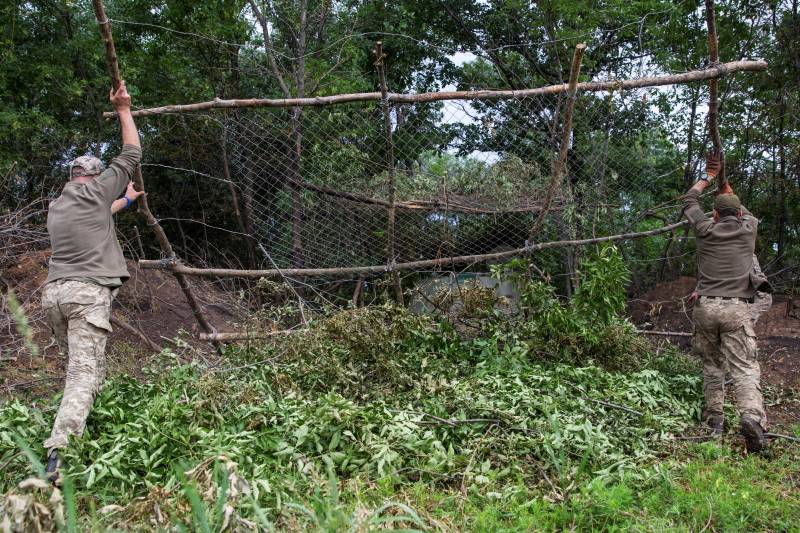
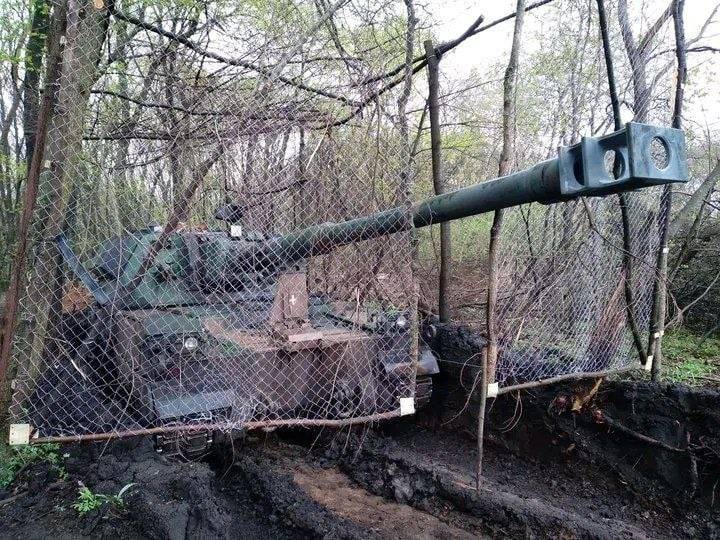
Without branches and sticks anywhere
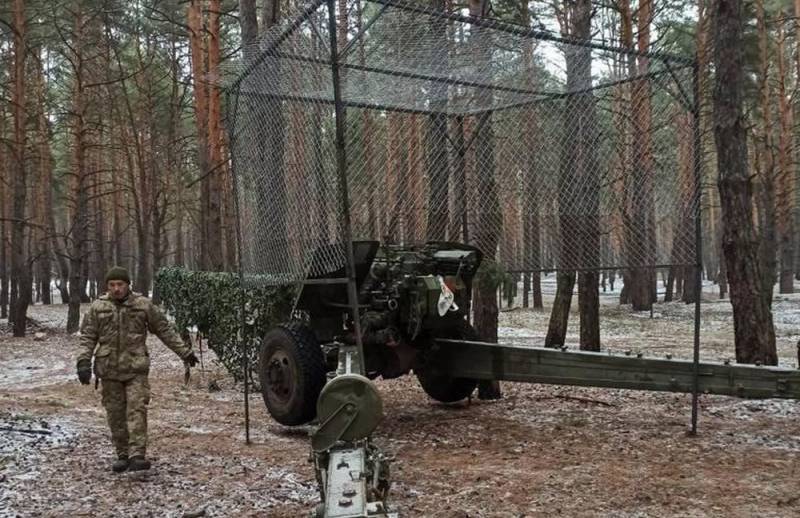
Practically factory metal frame dual purpose: against the "Lancets" and for camouflage
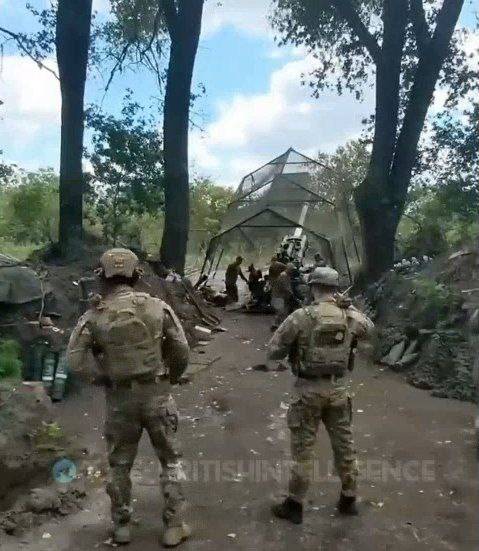
Another metal frame with mesh against the "Lancets"
Nevertheless, having become virtually the only means of protection, nets and frames made life significantly more difficult, primarily for the gunners who were part of the calculations of towed guns. As the authors of the Panzerwaffle/Panzerwaffle Telegram channel rightly point out, bulky and heavy structures have to be carried with them and assembled and disassembled when moving from place to place.
All these manipulations require time, which, in the conditions of the most severe counter-battery fight, is just barely enough, which makes non-self-propelled howitzers even less mobile in the absence of positions prepared in advance and surrounded by nets. Therefore, paying for security, although not guaranteed, has great difficulties in operation.
The main question is, does it work?
It must be understood that the main filling for the "Lancets" are shaped charges, the main damaging effect of which lies both, in fact, in the cumulative jet itself, and in the stream of fragments, the main part of which moves parallel to the axis of the charge - forward. Therefore, if the optimal distance from the grid to the protected object is provided, then the cumulative jet ceases to play a decisive role and fragments come to the fore.
So a self-propelled gun with its armor may not feel anything, but a towed gun and its crew, especially when hit "from the stern", or the same radar, can fly in such a way that the consequences will be very sad. Therefore, much depends on the design itself, the place of arrival and a bit of luck.
Nevertheless, our "X-leaders" have already adapted to these Ukrainian innovations, making double attacks: the first "Lancet" destroys the impromptu defense, and the second one hits the target. Consumption, of course, is growing, but it is fully justified by the destruction of weapons that are critical for the Armed Forces of Ukraine.
Information